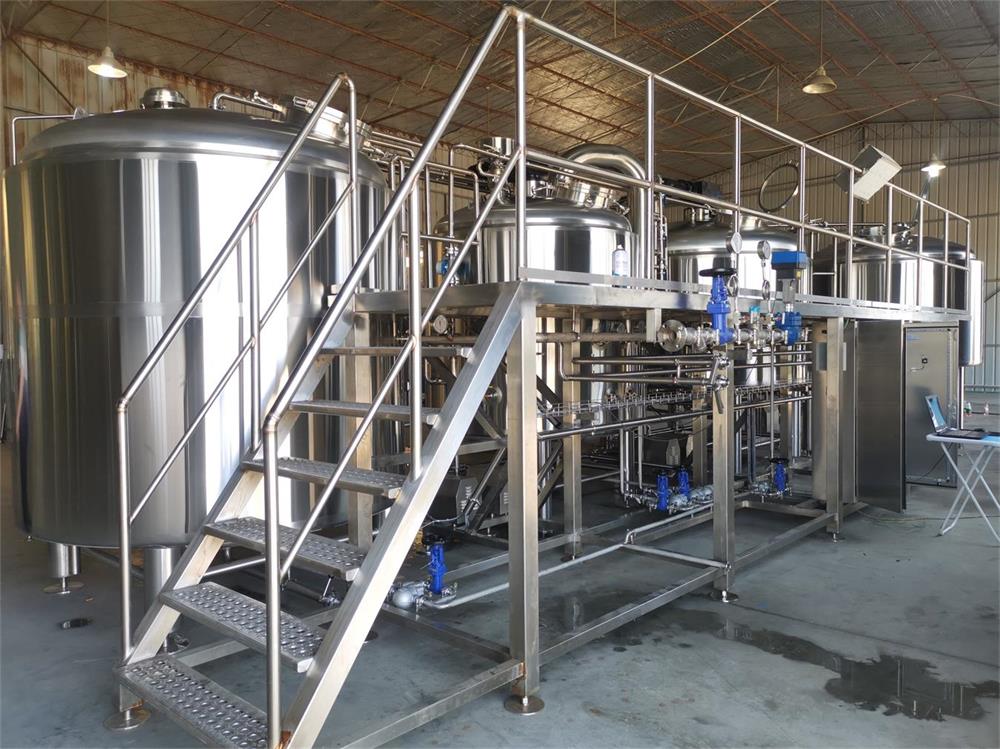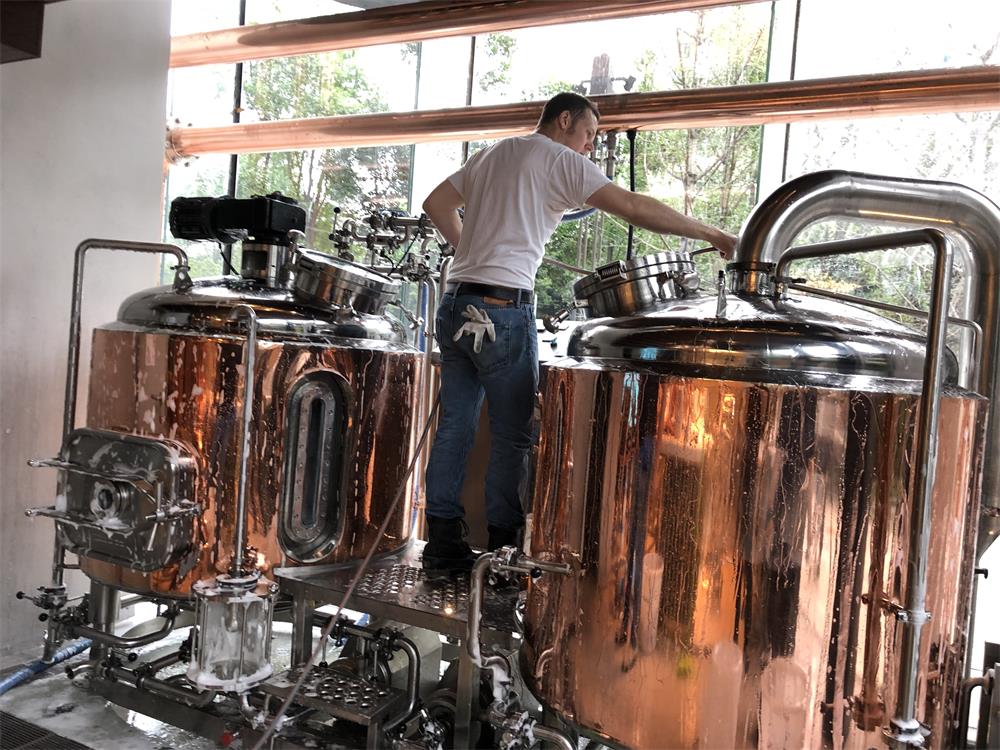Overview of Beer Production Equipment
Beer production has experienced a resurgence in the past few years, fueled by the popularity of craft brewing and the growing demand for locally brewed beers. For those venturing into the brewing industry—whether on a commercial scale or as a homebrewer—understanding beer production equipment is key. From brewing kettles to fermentation tanks and bottling lines, each piece of equipment plays a crucial role in the brewing process. In this guide, we’ll dive deep into the types of beer production equipment, their functions, how to choose the right setup, and even provide insights on costs, suppliers, and installation. Whether you’re a startup brewery or scaling up your operations, this comprehensive guide will have everything you need to know about beer production equipment.
Beer Production Equipment Guide
Beer production equipment can be broken down into several key categories, each of which performs a vital task in the brewing process. Understanding what each component does will allow you to plan the layout of your brewery and ensure you have the right tools to create high-quality beer efficiently.

Brewing Kettles and Mash Tuns
Brewing kettles and mash tuns are where the magic of turning malted barley and water into wort begins. These vessels are typically made of stainless steel for durability and hygiene. A brewing kettle is used to boil the wort, while the mash tun is where the mashing process takes place—essentially steeping malt in water to convert the starches into fermentable sugars. High-quality equipment will offer temperature controls and insulation to ensure consistent brewing.
Fermentation Tanks
After boiling, the wort is transferred to fermentation tanks, where yeast is added, and the fermentation process begins. The tanks come in various sizes depending on production capacity. Fermentation vessels must have temperature controls because the yeast needs to ferment the sugars at precise temperatures. Stainless steel conical fermenters are the gold standard as they allow for easy collection of yeast and offer optimal sanitation.
Bottling and Packaging Equipment
Once fermentation is complete, your beer needs to be packaged. Bottling and packaging equipment can vary from small hand-operated fillers to fully automated systems. Efficient bottling systems ensure that the beer is properly sealed, labeled, and prepared for distribution or sale. Packaging might include bottles, cans, or even kegs, depending on the brewery’s focus.
Beer Production Equipment Types
| Equipment Type | Function | Common Materials | Features |
|---|---|---|---|
| Mash Tun | Converts malt starches into fermentable sugars | Stainless steel | Insulation, temperature control, false bottom for filtration |
| Brewing Kettle | Boils wort, sterilizing and breaking down proteins | Stainless steel, copper | Built-in heating element, temperature gauge, whirlpool arm |
| Fermentation Tank | Allows yeast to ferment sugars into alcohol | Stainless steel | Temperature control, conical bottom for easy yeast collection, airlock system |
| Cooling System | Lowers wort temperature post-boiling before fermentation | Copper, stainless steel | Immersion coolers, counterflow chillers, glycol cooling units |
| Bottling Machine | Fills bottles or cans with beer post-fermentation | Stainless steel | Automatic filling, seaming, or crowning features |
| Kegging System | Used for storing and distributing beer in kegs | Stainless steel | Pressure gauges, automatic or manual filling, CO2 regulators |
Beer Brewing Process
The beer brewing process is a complex journey that transforms basic ingredients like malted barley, water, hops, and yeast into the beloved beverage. Let’s break down the steps involved in the brewing process and how each piece of equipment plays a role.
Mashing
Mashing is the first step, where malted barley is mixed with hot water to extract fermentable sugars. The mash tun is the equipment used in this phase, and temperature control is critical to ensure the right enzymes activate to break down starches.
Lautering
After mashing, the mash is transferred to the lauter tun where the wort is separated from the spent grains. This process requires a vessel with a false bottom that allows liquid to pass through while keeping the grains behind.
Boiling
The wort is then boiled in the brewing kettle, typically for about 60-90 minutes. During this time, hops are added to give the beer bitterness, flavor, and aroma. The boil also sterilizes the wort and helps in the formation of certain proteins.
Cooling and Fermentation
Once boiled, the wort must be cooled rapidly to a temperature that will not kill the yeast. This is done using a wort chiller or cooling system. The cooled wort is then transferred to the fermentation tank, where yeast is added to convert sugars into alcohol and carbon dioxide.
Conditioning and Packaging
After fermentation is complete, the beer may be conditioned—either in the fermenter or after packaging. Bottling or kegging the beer involves a final filtration process before sealing, labeling, and distribution.
Beer Production Equipment Layout and Customization
When designing a brewery, space is just as important as the equipment itself. Breweries can range from small, compact setups to expansive production floors.
| Parameter | Options | Details |
|---|---|---|
| Capacity | Small scale (1-5 barrels), Medium (5-30 barrels), Large (30+ barrels) | The capacity dictates not only the production volume but also the type of equipment needed and space required. |
| Space | Compact (homebrew or nano-brewery), Commercial spaces | Proper layout planning is essential to ensure smooth operation and space optimization. Commercial breweries often need more room for fermenters. |
| Design and Layout | Customizable, modular, standardized | Many manufacturers offer custom layouts and modular equipment that can scale as production increases. |
| Customization | Available for most equipment | Breweries can request custom tanks, kettles, and systems tailored to their specific brewing style and recipes. |
Beer Production Equipment Suppliers and Price Range
Finding the right supplier is crucial to getting the best value for your investment in beer production equipment. Pricing varies based on the scale of your brewery, the materials used, and the brand reputation of the supplier.
| Supplier | Equipment Offered | Price Range (Approx.) | Notable Features |
|---|---|---|---|
| SS Brewtech | Small-scale systems, fermenters, kettles | $500 – $30,000 | Known for high-quality homebrew and nano-brewery systems. |
| Blichmann Engineering | Brewing kettles, mash tuns, fermenters | $1,000 – $50,000 | Focus on user-friendly, professional-grade equipment. |
| BrauKon | Commercial brewing systems, bottling lines | $50,000 – $500,000+ | German-engineered systems known for precision and durability. |
| PicoBrew | Homebrewing kits, automated brewing systems | $300 – $10,000 | Innovative brewing systems for hobbyists and small breweries. |
| Czech Brewmasters | Large-scale fermentation and brewing equipment | $100,000 – $1,000,000+ | Specializes in custom large brewery setups with state-of-the-art technology. |
Installation, Operation, and Maintenance of Beer Production Equipment
Investing in beer production equipment is only half the battle—you also need to install, operate, and maintain it effectively to ensure smooth brewing processes.
| Process | Details |
|---|---|
| Installation | Most suppliers offer installation services or provide detailed instructions for DIY installation. |
| Operation | Ensure operators are trained to handle the equipment efficiently. Many systems come with manuals and support. |
| Maintenance | Regular cleaning and sanitization are key. Ensure to follow the supplier’s maintenance schedule for optimal performance. |
Choosing the Right Supplier for Beer Production Equipment
Selecting the right supplier for your brewery’s needs can be a daunting task. Here are some tips to guide your decision-making process:
| Factor | Considerations |
|---|---|
| Budget | Ensure you know your budget and match it to what the supplier offers. Consider leasing if upfront costs are prohibitive. |
| Reputation | Look for suppliers with good reviews and a solid reputation in the brewing community. |
| Customization Options | A supplier that offers custom-built equipment will better suit your specific needs. |
Advantages and Limitations of Beer Production Equipment
| Aspect | Advantages | Limitations |
|---|---|---|
| Stainless Steel Equipment | Durable, easy to clean, resistant to corrosion. | More expensive than other materials like plastic or aluminum. |
| Automated Brewing Systems | Saves time, ensures consistency, and reduces human error. | Higher initial cost and may require technical knowledge to operate. |
| Modular Equipment | Flexible and scalable, ideal for growing breweries. | May still require significant investment in space and infrastructure. |

FAQ
| Question | Answer |
|---|---|
| What is the most essential equipment for beer brewing? | Mash tuns, brewing kettles, and fermentation tanks are essential for any brewing setup. |
| Can I brew beer at home with professional equipment? | Yes, there are small-scale, professional-grade kits for homebrewers. SS Brewtech and PicoBrew offer great options. |
| How much does it cost to set up a small brewery? | A nano-brewery setup can start at around $10,000 but can go up depending on the equipment and capacity required. |
| What’s the lifespan of stainless steel brewing equipment? | With proper maintenance, stainless steel brewing equipment can last upwards of 20 years. |
| How important is automation in beer production? | Automation ensures consistency and efficiency, but it can be a significant investment for smaller operations. |
Conclusion
Beer production equipment is the heart of any brewery, from small-scale homebrewing to commercial production. The choices you make in terms of equipment will determine the quality and consistency of your beer, the efficiency of your processes, and ultimately, your brewery’s success. With the right combination of mash tuns, kettles, fermenters, and bottling systems, alongside careful planning of space, budget, and supplier selection, you’re well on your way to creating a robust and successful brewery operation.
Share this entry
Interested in learning more about Brewing Systems including additional details and pricing information? Please use the form below to contact us!
YOLONG BREWERY EQUIPMENT FAQS
- Commercial Brewery / Craft Brewery / Microbrewery / Nanobrewery
- What is The Difference Between Craft Beer and Industrial Beer?
- The Bespoke Differences In Custom Brewing Systems
- Everything You Need to Know About Kettle Souring
- How to Choose Brewing Equipment for Your business?
- How To Choose The-Best Partner To Build Your Commercial Microbrewing System?
- Two Detection Sensors That You Need To Use In Your Brewhouse System
- Remote Control Applications in Brewing Equipment/How does it work?
- How To Clean Your Brand New Brewery Tanks?

